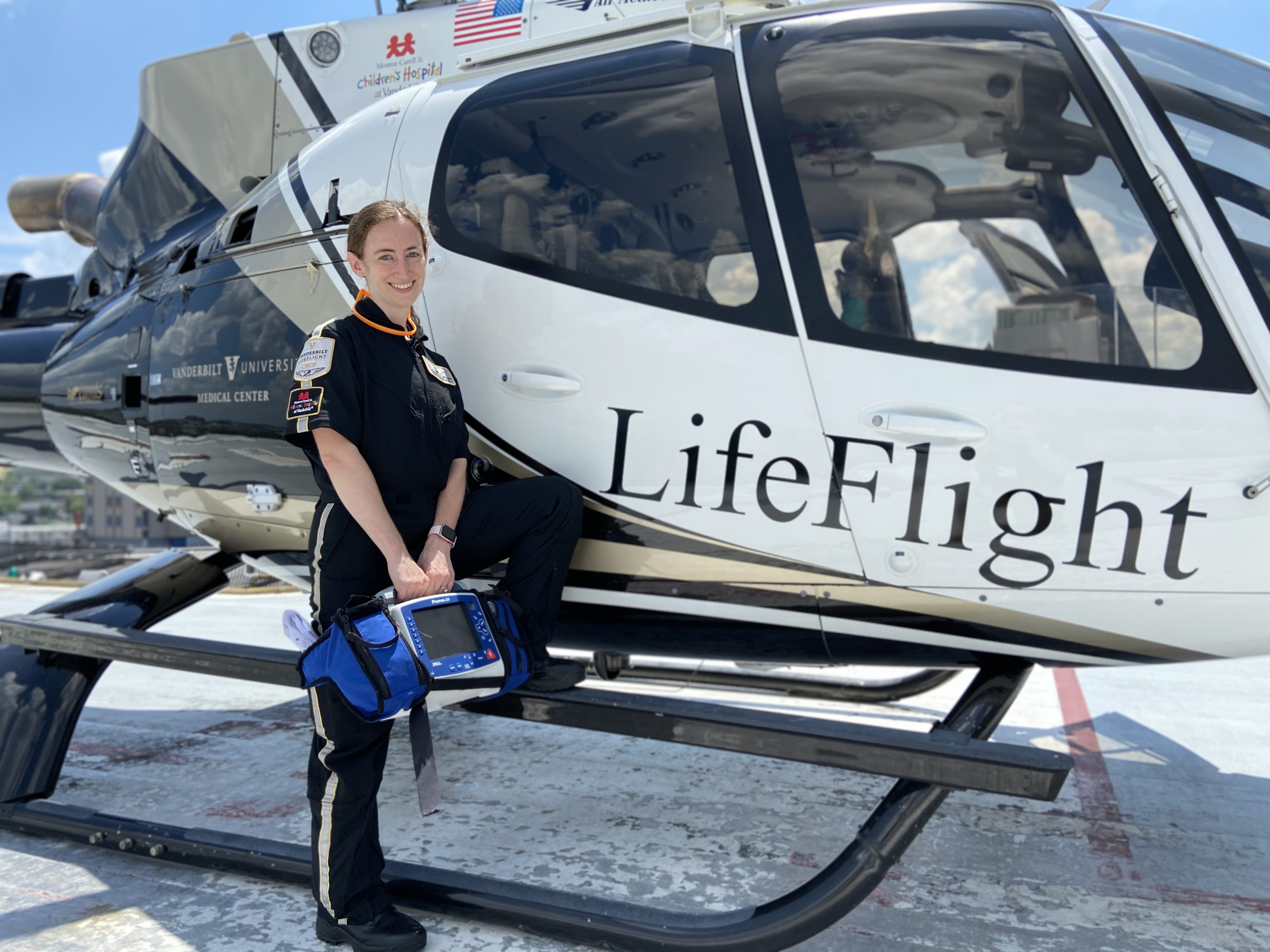Patients treated and flown by Vanderbilt LifeFlight are now receiving a higher level of care thanks to the credentialing of more than 20 flight nurses as nurse practitioners and the addition of a flight physician at several LifeFlight bases.
Now, out of a staff of about 100 flight crew members, more than 1/4 of those are providing care at the nurse practitioner or physician level. Vanderbilt LifeFlight is one of a handful of flight programs across the country that provides this level of expertise of front-line emergency care. Most flight programs offer a critical care nurse/critical care paramedic care team.

A nurse practitioner is a master (MSN) or doctorate (DNP) prepared nurse, and has specialized training and knowledge to make medical decisions that registered nurses may not have the training or experience to make. They must be board certified, and often are able to act as their own “medical control” — meaning they can prescribe their own medication and treatments independently.
“Our flight crews treat and transport some of the most challenging and complex cases we see at Vanderbilt,” said Stephan Russ, M.D., associate professor of emergency medicine and associate chief of staff for Vanderbilt University medical Center. “We want our referring partners and patients to know that they are getting the highest level of care offered when Vanderbilt is called to transport.”
More than 70 percent of the patients flown by LifeFlight originate at a community hospital and need more advanced care at a larger tertiary care center. LifeFlight will transport any patient to any medically appropriate hospital.
“They will have the complete picture of the patient status and can modify treatments in real time without delay and without having to contact additional medical control,” Russ explained. “The ability to make such split-second decisions in a life-or-death moment is important.”
Flight physicians are now flying at five of eight helicopter bases, including LF 1 (Gallatin/Sumner County); LF 3 (Clarksville/Montgomery County); LF 4 (Mt. Pleasant/Maury County); LF 5 (Murfreesboro/Rutherford County); and LF 7 (Cookeville/Putnam County). In all, these physicians are flying a total of about 260 hours per month.
Ashley Brown Panas, M.D., assistant professor of emergency medicine, chief flight physician and assistant medical director, Vanderbilt LifeFlight, said flying physicians are board certified in emergency medicine or eligible to sit for their board certification.
Since its inception in 1984, Vanderbilt LifeFlight has completed more than 45,000 accident-free patient missions. The program has grown from a single helicopter to more than eight bases across Tennessee, an airplane, two critical care ground ambulances and 12 advanced life support ambulances. All air operations are provided by Air Methods Corporation. All ground and medical services are provided by Vanderbilt University Medical Center.









